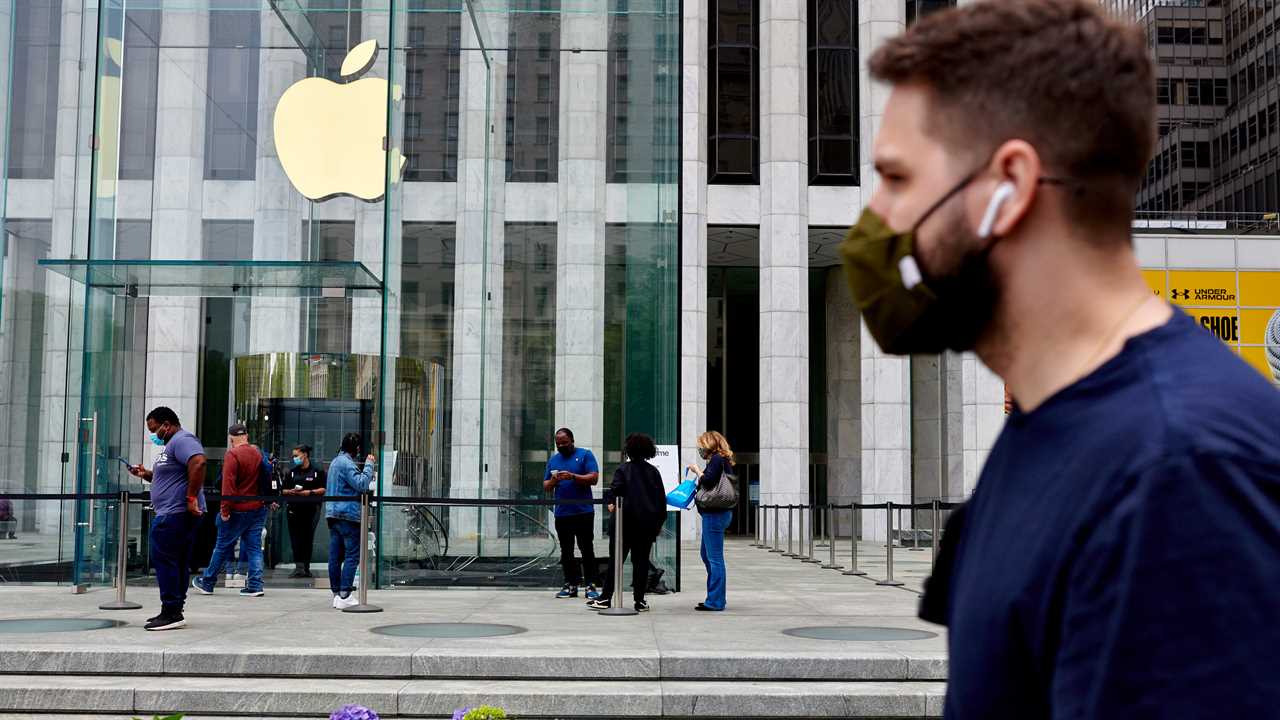
For years, Apple has surged behind large-scale manufacturing and rising sales in China. But, lately, the tech giant’s reliance on the world’s most populous country has veered from a strength to a vulnerability.
China’s efforts this spring to combat Covid-19 disrupted iPad production and damaged retail sales across the country, denting Apple’s earnings and contributing to its first profit decline in nearly two years.
On Tuesday, Apple reported a rise in sales of 2 percent, to $82.96 billion for the three months that ended in June — at least $4 billion less than the company said it would have collected had it avoided Covid-related shutdowns of factories in Shanghai. The company said profits fell 10.6 percent to $19.4 billion, its largest quarterly decline since 2019.
Apple was able to minimize the fallout from China because of its strategic shift in recent years from selling more devices to selling more software and services. Though combined sales of products such as iPhones, iPads and Macs declined in the most recent quarter, the company generated $19.6 billion in the quarter from sales of apps and Apple Music and Apple TV+ subscriptions. The 12-percent increase in sales of services was the smallest quarterly gain for that business in two and a half years.
The results exceeded the expectations of Wall Street analysts who had predicted a decline in iPhone sales. Apple signaled that it was optimistic about the current quarter, saying it expects its sales growth to accelerate and supply chain challenges to ease.
Read More About Apple
- The End of a Partnership: Three years after Apple promised to continue working with Jony Ive, its former design leader, the two parties appear to be through. Here is what the change could mean for Apple.
- Union Effort: Apple employees at a Baltimore-area store voted to unionize, making it the first of the company’s 270-plus stores in the United States to do so.
- Upgrading: At its annual developer conference in June, Apple unveiled a range of new software features that expand the iPhone’s utility and add more opportunities for personalization.
“Tim Cook and crew threaded the needle masterfully,” said Mike Frazier, the president of Bedell Frazier, a Bay Area-based firm with $600 million under management that counts Apple among its top holdings. But Mr. Frazier said it was clear that even the affluent Apple customer can cut spending a bit, which will most likely squeeze profitability in the future.
Tim Cook, Apple’s chief executive, bet big on China, consolidating the vast majority of the company’s manufacturing inside a country known for its lower-cost labor and business-friendly policies. After the coronavirus outbreak began there in 2019, Apple shut down iPhone production and lost sales. It later benefited from steady production as China got the virus under control while many Western countries struggled with outbreaks.
But China’s “zero Covid” policy, which led it to shut down Shanghai in the spring to quell an outbreak, exposed again the risks of Apple’s reliance on the country to produce and export its devices. In the most recent quarter, the production disruptions meant Apple was unable to benefit fully from the release of MacBooks with more powerful processors, some of which were put on back order until August.
“Investors are concerned about the connection to China,” said Dave Harden, the chief investment officer at Summit Global, a firm near Salt Lake City with about $2 billion under investment. It also counts Apple among its holdings. “They want to know: Is Apple ever going to develop the iPhone outside of that part of the world?”
Apple shares rose 3 percent in after-hours trading on Thursday.
Apple’s mixed results for the quarter were emblematic of the broader trends buffeting the global economy. Revenue declined 1 percent in China, where the country’s economy grew at its slowest pace since early 2020, but sales rose in the Americas, where retail spending has been resilient in the face of inflation increases.
The slowing economy will test Apple’s decade of growth. It sailed through the Great Recession behind the introduction of the iPhone, which would become the best-selling product in history. But it has transitioned in recent years from revolutionary innovations in its products to incremental improvements, leading analysts and investors to question whether customers will put off buying new devices in leaner financial times.
Apple relies on the iPhone for about half of its total sales. It has broadened its customer base in recent years by offering seven models ranging in price from $429 to more than $1,500. The premium prices mean Apple’s customers tend to be more affluent than the average smartphone buyer, but about a third of them earn less than $50,000 a year, according to Consumer Intelligence Research Partners, a tech research firm.
Other tech giants, including Google’s parent company, Alphabet, and Facebook’s parent company, Meta, have responded to the economic downturn by announcing they will slow hiring. Their changes come as business has slowed after a rapid expansion during the pandemic.






